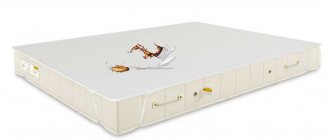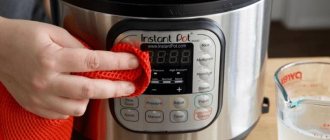A stainless steel sink needs to be properly cared for. Before purchasing a sink made from this material, you should consider whether it can be properly cared for.
Stainless steel is a strong, wear-resistant and resilient material. It is resistant to scratches, stains and other consequences of regular use. However, over time, the sink becomes covered with dark plaque, rust or lime deposits around the silicone seal and faucet.
It is important to know how to clean stainless steel sinks. After all, it’s more pleasant to wash dishes in such a sink.
Anti-blackness remedies
Blackness on stainless steel appears after 2 years. Even with proper care, the surface of the sink darkens and the shine disappears.
To care for the sink, use homemade compounds or household chemicals. You can use several products in combination to get the best effect.
How to clean a sink:
- Vinegar is an excellent cleaning agent. The universal composition saves from blackness, disinfects and whitens well. Directions for use: place a spray bottle on the bottle, spray over the surface, leave for 10 minutes. Rinse with water. Open the windows and ventilate the room.
- Starch and soda are used according to the same principle. A kitchen sponge is moistened with water and starch or soda is added. The oxidized area is cleaned with the hard side. All that remains is to wash the sink to remove any remaining product.
- Bleach works well to remove black stains on a stainless sink, but can leave white marks. Dilute with water, treat the sink, rinse with water. Clean carefully, making sure that the treated areas do not become lighter than the rest of the structure.
- Rub the problem areas with tooth powder.
Blackness is an oxidation process formed due to the negative effects of oxidizing agents. The sooner you start removing dark spots, the better they will come out.
Unfortunately, it is impossible to prevent their occurrence. It remains to use special means from time to time.
Cleaning an enamel sink
The enameled surface does not tolerate hard metal brushes and abrasives; they can leave scratches on it in which dirt will accumulate. To clean such a sink, it is better to use sponges and rags, as well as nylon bristles.
Rust stains often remain on enamel surfaces. To get rid of them, you can purchase a special product at a hardware store or prepare it yourself. You need to pour 100 grams of ammonia into a glass jar, and add 50 grams of peroxide to it. The process must be done very carefully; be sure to wear rubber gloves and protect your eyes.
The resulting solution must be mixed by shaking the lid of the jar. A clean rag should be soaked in the prepared product and applied to areas with rust, leaving for ten minutes. After this, rinse everything off with water.
Limescale remover
Constant use of the sink requires daily maintenance. Regular contact with water leads to the formation of plaque and stains.
Limescale deposits are not deep and can be easily removed with home remedies. How to clean a sink from plaque:
- Dilute vinegar with water in a 1:1 ratio. The sink will glow like new after using this solution.
- Use a special liquid to remove limescale. For example, Ravak. Stainless steel is treated with the liquid and left to act for 10 minutes. Remove residues with plenty of water.
- Citric acid will clean your kitchen sink. Close the sink and fill with warm water. Dilute a packet of citric acid and stir until all the grains dissolve. Leave to act for 1-2 hours. Rub the walls with the hard side of the sponge, drain the waste liquid, and rinse the walls of the sink. Do not make a strong solution of citric acid; dark spots will appear on the sink.
- Distribute baking soda evenly. Rub thoroughly, rinse and repeat.
- Use Astonish paste to clean pots and ovens. This is a soft abrasive and will not damage the surface. Apply to the sink, rub well with a sponge, and rinse.
- Apply oxalic acid in powder form. Dilute the powder with water. Treat the water stone with gruel. After 15 minutes, wash off the residue.
- Dry mustard gives a good effect. Cover problem areas with powder, wash thoroughly with a sponge, and rinse off the residue with water. Mustard cleans the pipeline well if there is an unpleasant odor. Not suitable for plastic pipes.
The only methods to prevent limescale deposits are to check the taps for leaks and wipe the sink dry after use. Avoid constant presence of water in the sink.
Heavy soiling
If you don’t take care of your sink for a long time, there will inevitably come a time when it will be difficult to clean it using conventional means. You can wash a stainless steel sink from plaque, grease, and soot using the following means:
- dishwashing detergents;
- table salt;
- baking soda;
- vinegar;
- rags, sponges, toothbrush.
When everything is prepared, you can wash your stainless steel sink using a simple procedure:
- Dish soap is poured into the sink. Even a soap solution is suitable as an analogue. Fill with hot water and wait for it to cool.
- The grooved parts are cleaned with baking soda and a toothbrush. Simply rub the areas with baking soda and water and wait ten minutes.
- The water is drained and the entire surface is rubbed with vinegar. It will additionally disinfect the sink and give it shine.
If “soaking” the sink was not able to cope with all the dirt, then you can treat the surface with a vinegar-salt solution for twenty minutes. This combination perfectly dissolves fat deposits, even very old ones.
Removing dirt and greasy deposits
To remove greasy deposits, use regular dishwashing detergent. Laundry soap will do.
A cleaning agent made from soda and office glue will help clean the sink. How to clean a stainless steel sink:
- Boil 5 liters of water, add 100 g. soda and 100 ml of transparent stationery glue.
- Wait for dissolution. Close the sink and pour the prepared solution into it.
- When the mixture has cooled down, drain it.
- All dirt will come off. All you have to do is wash the sink with clean water.
This method is used to clean stainless cookware. It is boiled for 20 minutes, left to cool and rinsed with water.
How to keep your sink clean
The smooth polished surface of the sink minimizes the accumulation of dirt and bacteria. To ensure that she always looks well-groomed, you need to follow simple rules:
- Daily care. It takes a little time. After cooking and washing dishes, you need to wipe the stainless steel with a damp sponge and a drop of detergent. Surface active substances will dissolve fat and add shine to the metal. The foam is rinsed with water. Then wipe the surface with a cloth or paper towel.
- Do not leave dirty dishes or leftover food in the sink for a long time. Some products (citrus fruits, sauces, coffee) when in contact with metal provoke the formation of stains. Do not place iron objects in the sink. Moisture causes them to oxidize, and the resulting rust ends up on the stainless steel. This type of interaction is not desirable. You should immediately wipe off brown stains with a damp cloth.
- Regular polishing with a special compound . The procedure is carried out 2 times a month. It enhances gloss, removes minor scratches, and forms a protective layer. The option of polishing with olive oil is possible.
Cleaners containing sodium hypochlorite cause light stains on the metal and should be avoided.
How to get rid of unpleasant odor
Cleaning a stainless steel sink is not enough to remove the stink. It can be eliminated using special compounds or folk remedies.
How to get rid of the smell:
- Pour salt into the drain hole. Leave for an hour. Rinse with water.
- Pour the required amount of Mole into the drain. To fill with water. Leave the composition to act for 5–10 minutes. Rinse the drain hole well.
- Spray the sink with baking soda and pour it into the drain. Then pour in vinegar, preferably from a spray bottle. Pour into the drain hole too. A reaction will begin, during which foam and hissing will appear. After 10 minutes, pour boiling water into the drain hole and rinse the sink itself with warm water.
- Pour Domestos or Deboshir into the drain. Leave for 2 hours. Rinse the drain with plenty of water. Domestos can be used to clean the sink. Will clean off any dirt.
When purchasing professional chemicals, pay attention to the composition. If the drain in the house is made of plastic pipes, the Israeli product Pothan will do.
Cleaning a faience sink
Daily cleaning of a faience sink does not require special cleaning products. It is enough just to wipe the surface with soapy water. Like enamel sinks, such sinks are resistant to hard metal brushes and abrasive powders, so soft rags and foam sponges should be used for them. Simple stains can be removed with soda, and lemon will help to add freshness and prevent germs. It is enough to rinse the sink after cleaning with water and squeezed lemon juice.
You can restore the whiteness of a faience sink that has darkened over time using bleach. It is necessary to draw water inside, having previously plugged the drain hole, and add a little bleach. After half an hour or more, drain the solution and rinse the surface thoroughly.
Every housewife should know how to clean the sink and make the kitchen environment ideal. There is no need to purchase expensive chemicals for cleaning; many effective products are available in every home. All you have to do is follow the tips and choose the most appropriate cleaning method for yourself.
Rules of care
Caring for a stainless sink is simple and easy. The main thing is to follow the rules and not use prohibited cleaning methods.
How to care:
- Select cleaning and detergent products carefully. Stainless steel is easily damaged by acids and alkalis. Study the composition more carefully.
- Do not use steel jaws. This is the main enemy. The iron sponge leaves scratches on the surface. Bacteria penetrate into them, and the sink rusts faster (if it is made of poor-quality stainless steel).
- Remains of food remaining on the strainer should be removed immediately.
- Rinse with warm water after each use.
- In the evening, wipe with a dry cloth, preferably after each wash.
- Regular cleaning is important for stainless steel sinks. Wash once a day with detergent. This will prevent the accumulation of grease and dirt that lead to dark spots on the surface.
- Do not allow rusty objects to fall into the bottom of the sink. Nuts, nails or wire wool will cause rust stains.
- Do not use sharp objects to remove dirt. For example, sandpaper, knife, file.
The advantage of a stainless steel sink is that there are no stains of wine, coffee, tea or juice left on the surface.
If you properly care for your stainless sink, install a water filter and do not use prohibited cleaning products, your sink will look attractive for a long time.
Stainless steel is a good, hygienic material, wear-resistant and reliable. A sink made of this material will not warp if hot oil is poured into it and will not change color.
To ensure that the sink does not lose its functional and aesthetic benefits, it must be properly and regularly maintained.
General cleaning of a stainless steel sink
There are also situations when the sink is so dirty that it seems impossible to wash it. There is no free space on its surface from all sorts of contaminants, and a terrible smell comes from the sewer. You can't get by with just detergent and regular soda. You will have to use cleaning methods with other substances.
To clean the sink from grease deposits, you need to fill it with hot water, after plugging the drain hole. Then pour in the detergent and wait for the water to cool. This procedure will soften grease and other contaminants, after which all that remains is to clean the surface with the hard side of the sponge.
Hard-to-reach places are cleaned with a toothbrush. To do this, apply baking soda or dishwashing liquid to the contaminated area and leave to soften for half an hour. Then remove the dirt with a soapy brush.
You can return the metallic shine to the sink using a napkin soaked in vinegar. To clean the drain hole, a product such as “Mole” is often used, but other methods can also be used. For example, pour half a glass of soda and the same amount of vinegar inside the pipe. After a few minutes, pour boiling water over everything and rinse thoroughly. To deep clean the drain, use crushed ice and half a package of coarse salt. You must remember to turn on the cold water so that it runs in a thin stream into the drain. The resulting mixture will perfectly clear the pipe from blockages and eliminate the unpleasant odor.
Types of sinks by installation method
A built-in stainless steel sink is the most popular among residents of the Russian-speaking area.
It is necessary to dwell in more detail on what stainless steel sinks can be like for a kitchen. They are usually divided by installation method. There are three varieties, which have certain characteristics. You can literally “put” overhead sinks on a base cabinet. Such a sink already plays two roles: both sinks and countertops. Don't worry about cabinet sizes - they can vary.
The sink manufacturing technology takes into account the creation of both small and very large samples. Such sinks will definitely suit you if you have an inexpensive set of separate elements in your kitchen. This type of installation also has its advantages: simplicity (you can easily do it yourself, without the help of specialists).
But the big disadvantage of an overhead sink is its too small thickness. The service life of such a sink is short. We also note that if moisture gets into the space between the sink and the cabinet, then you will agree that this will be very unhygienic.
The cut-out sink fits easily into any countertop. In this case, you do not need any specialists. And this is a big advantage - you won’t spend a lot of money. Therefore, such a product is of enormous relevance in the modern market. When installing a mortise sink, no seams or cracks are formed, moisture accumulation is automatically prevented, and rotting will not occur (which can occur with the overhead method). The aesthetic appearance will only please the housewife!
If you are still wondering which sink is better, we suggest you consider the third option - integrated sinks. Integrated sinks are a collection of sinks. At the same time, the position of their sides is slightly different. That is, in simple words, these are just two or three sinks connected into a common façade. However, such sinks are difficult to install. Therefore, people hire specialists, which requires considerable finances. It should be noted that this drawback is only for integrated stainless steel sinks. If you decide to buy an integrated sink for your kitchen, remember that such a sink requires a special mixer that can be easily turned.
Its difference from other methods is that sinks are installed below the level of the countertop itself. You can use this method for all types of headsets. The functional advantages can safely include the same qualities that we described for mortise sinks.
Traditional methods
All recipes are very simple. They are based on the properties of natural substances that are found in every kitchen.
Boiling
The recipe was invented by housewives during Soviet times. At that time, there were practically no household chemicals in stores. Everyone used improvised means.
Inside
The cleaning solution is poured into a stainless steel container. Place it on the burner, heat the liquid to a boil, and simmer over low heat for at least 2 hours. Leave to cool. The solution is drained. Rinse the pan and wipe dry.
Outside
Take a large enamel basin or tank. Fill it with cleaning solution. Place it on the stove. Stainless steel objects are lowered into it. The liquid should completely cover them. The dishes are boiled for at least 2 hours. Remove from the pan when the solution has cooled. All items are washed under running water and wiped.
How to prepare the composition
Take the required volume of water. The working solution is prepared based on the following proportions:
- water - 5 l;
- stationery glue - 100 ml;
- soda - 500 g.
Anti-carbon pastes
There is always a product in the kitchen that can be used to scrub off burnt milk and porridge.
Ground activated carbon
Remains of burnt porridge are quickly removed with activated carbon. The tablets are crushed. Powder is poured onto the bottom of the pan. Pour water into it. After 15 minutes, the carbon deposits are easily wiped off.
Ground coffee beans
Thrifty housewives do not throw away filters with spent coffee. They use grounds instead of body scrub and metal pan cleaner. Apply it to the contaminated area, rub with a sponge, leave for 10 minutes, and rinse with water.
Liquids from white deposits and scale
Scale forms in the kettle, and a white coating forms on the walls of the pan. The cause of deposits is hard water. There are 3 products that can easily cope with this type of pollution.
Citric acid solution
Fill the kettle ⅔ full with water. Add 20 g of citric acid. Boil. Allow the water to cool and boil one more time. Plaque removal begins after a few hours. Scrub with a sponge or brush.
Coca Cola
Fill ⅔ of the pan with the drink. Bring it to a boil. Leave to cool. The plaque is wiped off after 30 minutes. Use a brush or sponge.
How to treat cutlery
Spoons, forks and knives lose their shine over time and contact with food. Restore your radiance using affordable products.
9% vinegar and lemon juice are equally effective. They are applied to cutlery with a flannel napkin. After 30 minutes, rinse and wipe dry.
Ammonia
The lost shine is restored with ammonia. It is added to water - 1 tsp. l/l. The previously washed stainless steel cutlery is lowered into the basin. After 5-10 minutes, rinse spoons, forks, and knives and wipe dry with a kitchen towel.
Non-abrasive toothpaste or powder
The products remove the yellow film and polish the surface. A small amount of paste is applied to the surface and rubbed with a napkin. After rinsing, wipe and rub until shiny with a towel.
Mustard powder
Mustard powder has cleaning properties. It is used to make paste. Stirring constantly, add warm water. The mixture is applied with a brush to the tarnished surface of the stainless steel.
Wear gloves when working with table vinegar. It quickly removes all types of contaminants. Apply it to a soft sponge and wipe tarnished metal surfaces. Durable films of old fat are difficult to remove. To enhance the cleaning effect, add lemon juice to the vinegar. After the procedure, the dishes are rinsed.
Lemon juice solution
Squeeze the juice from half a lemon. For 1 liter of water you need only 1 tbsp. l. Moisten a sponge with the resulting solution and wipe the pan with it inside and out. Rinse it with water and wipe dry with a towel.
Steel Polish
No need to run to the store. An effective polish is available in the kitchen.
Raw potatoes
To make the kettle shine like new, wash the potatoes and cut them into 2 halves. Rub them on a steel surface. Use the same method to shine the pots.
How to get rid of burnt jam
Burnt sugar is difficult to remove. The work is simplified by using table vinegar and laundry soap for cleaning. Water is poured into the pan. Pour in soap shavings. Bring to a boil. Remove the pan from the burner. Pour in ½ tbsp. vinegar. When the water has cooled, wipe off the dirt.
How to remove rust
Small rusty areas are removed with baking soda. The surface is moistened with a sponge. Powder is applied to her. After 60 minutes, try to scrub off the rust with a brush. If the result is achieved, the surface is washed with clean water and wiped.
With regular care, stainless steel cookware will not tarnish. Serves for many years, maintaining an attractive appearance and functionality.
Removing stains
When it comes to household cleaning, hydrogen peroxide is becoming a popular choice. Not only does it clean and disinfect, it's an environmentally friendly alternative to chlorine bleach. If you have pets or small children, you may want to invest in a bottle of peroxide. To clean a stainless steel sink with peroxide:
Mix three parts wine vinegar with one part hydrogen peroxide. You don't need a lot of cleaner—start with three tablespoons of vinegar to one tablespoon of hydrogen peroxide. Dampen a soft cloth and wipe the sink. To remove stuck food and stubborn grease, use a nylon brush or pot scrubber. Again, avoid metal brushes, scrubbers, and sponges made from copper. Shine and remove scratches from stainless steel The next time you use lemon for cooking, save the leftovers for cleaning your stainless steel sink. Depending on how you used the lemon, cut it in half and rub the pulp side into the shell. Finally, to remove streaks and stains that often remain after cleaning a stainless steel sink, wipe the base of the sink with soda or olive oil. Pour some onto a paper towel or rag, then wipe the sink. Maintaining an attractive stainless steel sink Avoid harsh or abrasive cleaners. Abrasive cleaners can damage the surface of stainless steel, leaving scratches. Matte stainless steel perfectly hides scratches; polished steel, however, is also not easy to scratch. Test your cleaning products on an inconspicuous area of the sink before using. Always wash with the grain of the sink, not against it. Keep your sink clean. Dirt, food debris and grease that remain on the surface of a stainless steel sink can create difficult stains or damage the finish of the sink. Avoid cleaning products with bleach and chlorine. Stainless steel and chlorine bleach should not mix. Chlorine bleach ions react negatively on stainless steel. This can lead to oxidation, gray and yellow spots. Avoid metal brushes and sponges. Stainless steel is polished, so wire brushes may scratch the finish. Subsequent rusting contributes to the corrosion that forms on the surface of the stainless steel sink.
How to clean a stainless steel sink from plaque and rust
Some housewives have stainless steel sinks installed in their kitchens, the popularity of which is growing every day. Kitchen utensils made from this material are in perfect harmony with other appliances and, with proper care, retain their original appearance. They are also considered more aesthetic, hygienic and practical.
But no matter how durable the sink is, stains, plaque and rust can form on it. And therefore, you need to identify the reasons that affect the appearance of the sink and find out with what means and methods you can remove dirt, while avoiding the formation of defects.
How to clean a metal sink
Caring for a metal sink is generally quite simple if you remember one important feature. Under no circumstances should they be rubbed too hard with rough, hard sponges or brushes; the remaining scratches cannot be removed with anything and the radiant shine cannot be restored.
In addition, you should avoid rough sponges and detergents with fairly large abrasive particles. When washing a sink, you need to clean dirty stains along the fibers of the metal material. And to make the sink shine like when you bought it, you can rub it with ethyl alcohol or a regular solution of vinegar and water. This cleaning once a week will be enough. It is recommended to wipe the metal sink dry after each use.
How to clean a glass sink
A glass sink can be called the most exquisite and original decoration in the house. And, of course, the best place for it is the bathroom. A kitchen with a glass sink is not the most rational solution. Unless you are going to wash pots, enamel bowls, frying pans and other fairly large utensils in it (but then where can you wash them, if not in the kitchen?) Therefore, every housewife who has such a “helper” should remember that glass It is easily scratched by any hard object, and because of this you need to wash it only with mild agents and use soft cloths and sponges. No powdered products should be used, especially with abrasive additives.
Ideally, it is better to buy a special product to clean such a sink, then the likelihood of damage to the glass surface will be minimized. Although, before using the cleaning solution, you should still test it on similar material.
After the sink is washed (and this should always be done after using it), the glass must be wiped dry, otherwise this can lead to the appearance of “water stone” and various unsightly stains.
How to wash a faience sink
Earthenware is one of the most durable, durable and practical coatings. Cleaning it is quite easy, since a wide variety of detergents can be used here, even regular washing powder.
If the earthenware sink requires serious cleaning, then you can do it in the following way. You need to fill it almost to the brim with hot water, closing the drain hole, pour about a whole cup of bleach into it, and leave everything like that for more than 30 minutes, you can even wait about an hour. Then drain the water from the sink, wash its surface with warm water and wipe everything with a napkin.
You can remove rusty stains from earthenware by using hydrogen peroxide along with alcohol (10%). For this purpose, you can even use a hard brush, but not steel wool, otherwise scratches will remain.
Organize a cleanliness day for your “helpers” in the kitchen and bathroom, and they will delight you with their radiant appearance for a long time, especially after cleaning the sink, you already know.
Cleaning a darkened sink
Stainless steel surfaces are very susceptible to various oxidizing agents, and therefore dark spots often appear on them, which are not amenable to daily preventive cleaning. How to clean the sink if it has turned black and covered with dark spots?
Less severe discoloration can be cleaned with baking soda, but this requires some mechanical effort. Apply a certain amount of soda to the abrasive side of a damp sponge and rub off the dark stains until they disappear completely.
An interesting method of cleaning with starch. Any stainless steel products can be lightened with potato starch or the water in which the potatoes were boiled. This water is saturated with starch and, while hot, bleaches silver and steel almost white. You can pour this water on a darkened sink or rub starch on black spots in the same way as soda. And if suddenly the sink turns black, then it makes sense to prepare mashed potatoes and use water for cleaning.











